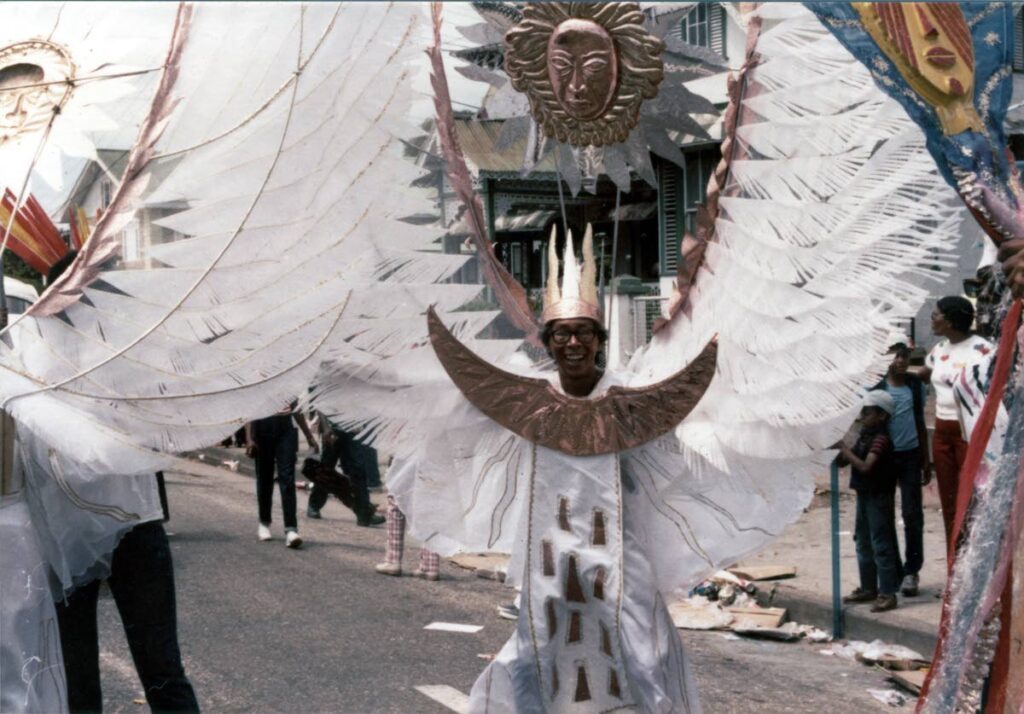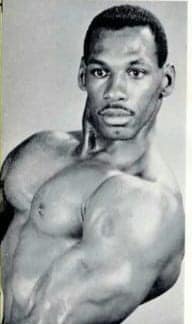|
THE GODNA WALLAS ( TATTOO MAKERS)
The East Indian Immigrants who came from India to work as indentured Labourers possessed a variety of highly specialized skills that were part of their Cultural Legacy. There were the tattoo - makers or GODNA WALLAS who roamed the villages and estates announcing their arrival by using a small hoorka to make a rattling sound while shouting out " Aray!Aray! Suno! GODNA WALLA awela La tayyar Hoja!" Which when translated mean " Listen ! Listen !the Tattoo Maker is coming , be prepared!". Tattoos or traditional body art has been practiced for centuries in many Indian communities and Godna ( the art of pricking the flesh with needles dipped in ink ) is one such tradition of body tattooing. Tattoo designs were etched on the arms and hands of newly wed brides. The popular designs of tattoos are geometric shapes and patterns as well as celestial objects such as the sun and the moon. The popular belief among the practitioners of the art form is that, unlike jewellery, the body continues to remain adorned with godna even after death For married persons it is said that if both the husband and wife tattooed three dots on their necks, after death they will meet together in heaven. Legend also has it that Pundits and elderly men would accept food and water only from Godna tattooed married women However, the practice gradually lost its cultural meaning. You can read more about this topic in this link https://mapacademy.io/article/godna/ Source: (Patricia Bissessarsingh, Virtual Museum of Trinidad & Tobago, May 28, 2024)
0 Comments
 FILE PHOTO: THA Education Secretary Zorisha Hackett - In an effort to raise the island's pass rate in Mathematics, the Tobago House of Assembly and several stakeholders are implementing smart classrooms in secondary schools.
Speaking at the launch of the project on Tuesday at the Anne Mitchell Gift Auditorium of the Scarborough Library, THA Secretary of Education, Research and Technology Zorisha Hackett said the initiative aims to improve student engagement, comprehension and performance in the subjects by leveraging cutting-edge technology and innovative teaching methods. Hackett described the launch as “momentous”, noting that the project is a collaboration among the division, Solutions Specialist Ltd, FLOW and RBC. She said the first phase involves installing nine smart boards in classrooms. “We are enhancing our focus on mathematics education because there is an average of only 45 per cent of Caribbean students who have passed this exam historically. This definitely indicates a concerning trend in mathematics proficiency among our students.” She said this challenge needs to be addressed head-on. The division, she said, will be targeting fourth-formers in the first instance. “Through this smart classroom enhancement project, we are equipping our teachers with tools, the necessary training and, of course, the support they need to integrate technology effectively in your classrooms. This initiative, therefore, underscores the critical importance of a data-driven approach in education, allowing us to track student progress and tailor our strategies accordingly.” She said the division’s partnership ensures comprehensive teacher training and ongoing support and as its secretary, she remains committed to leveraging technology to provide the teachers and students with interactive and personalised learning experiences to foster collaboration and engagement and prepare the students with the essential digital skills for the future. “This project is not just about improving academics -it is also about transforming the way we teach and the way we learn. As we embark upon this digital transformation journey together, let us remember that our ultimate goal is to empower our students to reach their full potential and to ensure that no child is left behind.” (Source: Newsday, May 14,2024) Dr David Picou plays mas with Peter Minshall on a trip back to TT. - KIM JOHNSON THE tributes have been paid on the death of my maternal uncle Prof David Picou, who died on May 4. He was one of the great Caribbean men, whose research into malnutrition saved millions of children’s lives in the Caribbean, Latin America, Africa and Asia, when starvation was rife. As my daughters’ obstetricians once told me, he was one of the region’s greatest scientists. And that’s fine and well-deserved, but it doesn’t give an idea of the man, who was no stuffy scientific nerd, all work and no play. No one mentioned, for instance, that Uncle David loved Carnival passionately, like many Chinese-Trinis. At his home was a collection of paintings of pan and mas, and copperwork by Ken Morris from his costumes. When he lived in Jamaica, after about 20 years, he began returning to Trinidad for every Carnival to play mas, starting with Peter Minshall’s Paradise Lost, until he moved back here. For that first band, he was part of the group that made a plaster of Paris mould for Peter Samuel – who had a damaged spine – so his Serpent in the Garden of Eden costume could be strapped on without hurting the masquerader. So the masman that was Prof Picou was never isolated from the academic. In 1981, for instance, there was a conference on Carnival at The UWI, and one presenter did not show up. I was working as a research assistant at The UWI at the time and I invited Uncle David to fill the spot. He did so, and spontaneously presented one of the most insightful analyses of the aesthetic considerations involved in designing a king-of-the-bands costume. Dr David Picou in Minshall's Lords of Light in 1985. - At first Uncle David came home under his own steam, but after a while he arranged every The UWI faculty of medicine meeting to be held in Trinidad in the Carnival season so that academics from around the world would get a taste of what he loved as much as his medical research. He would rigorously make attendees work without a break till about 2 pm. Then he’d say, “Ok, work done for the day – time to lime.” And he’d pour drinks. At night they’d all go to a calypso tent. He always played a section leader in the band in a large, ornate costume, which he’d take back to Jamaica. Those days there was a family joke that Uncle David’s sole topic of conversation was either the Carnival just passed, or the next one coming in six months’ time. And when he had people over to his home in University Close in Mona, and the rum started to flow, and the calypso was blasting on the stereo, he’d put on his costumes – as many as he could wear at the same time – and begin to dance. In The Sea he played a manta ray, with 15-foot wings, and he’d put it on to dance, spinning around, knocking over lamps and vases, crash! Smash! Once he fell off the truck on Carnival Monday and fractured two ribs. He was a doctor, so he knew what had happened. So what? He just bandaged it up and continued playing mas. He was a deeply social man; he loved to entertain, and he cooked like a pro. At the slightest excuse he’d invite people to his house and whip up an amazing four-course meal of Chinese food. Sometimes I’ve thought that his research into malnutrition made him acutely aware of the blessing that was a good meal. Every year in Mona he held an enormous Old Year’s Night party that lasted until lunch on New Year’s Day. I’d not gone to Jamaica yet, but I remember it because he’d get my parents to send up, with some BeeWee captain, pastelles, black pudding and souse for the fete. Then, after he returned home to live, around 1979, I think, he was one of the founders of his old school, Queen's Royal College’s, Men Who Cook fundraisers. Certainly, with his friend Prof Max Richards, he created the Max and Friends fundraiser fete for The UWI. Once, after Richards had become president of Trinidad and Tobago, Uncle David was in New York and invited him to where he was staying for a lime. As a visiting head of state, the US Secret Service had two bodyguards accompany Richards, and they stood outside the building shivering – it was winter.Uncle David went down and invited them to come inside and join the lime. He persuaded them they’d better do their duty in sight of the president.  Dr David Picou presents the plans for the Mt Hope hospital. - I could go on and on, because he also had a mischievous sense of humour and could regale you with amazing scenes from his life as a researcher. But I won’t. I’ll just end with one anecdote from when he was head of the Tropical Metabolism Research Unit in Mona.
At the time he worked with many working-class women who were overburdened with many, many children they couldn’t take care of. He’d prescribe contraceptives so they wouldn’t continue getting pregnant. One came to him complaining that the contraceptives weren’t working and she was pregnant once again, for the eighth or ninth time. “You made sure to take one of the tablets every day?” he asked the lady. “Yes doctor,” she replied. “Every day I make sure and push one up." (source: Newsday, May 14, 2024) Stacey Sobers, centre, plays Calypso Rose in Queen of The Road - The Calypso Rose Musical which was staged at Central Bank Auditorium, Port of Spain, May 10-12. - Photo courtesy Carlyle Morris NIGEL A CAMPBELL
Yes Productions, this past Mother’s Day weekend, presented Queen of the Road: The Calypso Rose Musical to a packed house at the Central Bank Auditorium, delivering another example of national theatre grounded in the ethos of Carnival, and in this case, thankfully, elevated above the many examples of low production value and “uneven quality” of Best Village drama. It was an evening of light entertainment in which the musical biography runs counter to the hyper-produced West End or Broadway experience like Tina –The Tina Turner Musical or Get Up, Stand Up The Bob Marley Musical, but follows a local path defined previously by director and playwright Rhoma Spencer’s own Bassman (Shadow) in 1995, and later by Zeno Constance’s The Road Make To Walk (Lord Kitchener) in 2003. The musical had been in development for a while, and advanced significantly at the University of Toronto as part of Spencer’s 2022-23 Artist-in-Residence at the Queer and Trans Research Lab there. According to the lab’s website, “Spencer had been working since 2019 on a jukebox musical based on the life of queer Caribbean icon and ‘undisputed Calypso Queen of the world,’ Linda McCartha Monica Sandy-Lewis, popularly known as Calypso Rose.” The jukebox musical in four acts that attempts, within the scope and breadth of just over 40 calypsoes by Rose, to elaborate on her life, and career growth and development. Spencer makes no excuses in insisting that the Best Village model was her preferred model for this musical: “I make no apology for situating (the production) in the original Trinbago Musical Theatre style – Best Village.” She has said previously that, “the best village competition was called ‘illegitimate theatre,” but that she “continued to crave the illegitimacy, a feeling that has inspired her whole career.” It worked here, with effective production and direction making song, dance, actress, and story gel smartly. Rose’s story, from childhood to adult, is told as a flashback sequence as she won the Victoire de la Musique award in 2017, the French equivalent to the Grammy. The descriptive above, “light entertainment,” does not eschew the fact that the musical covers important facets of Rose’s life and career that resonate still today. Act I touches on the family dynamics of the rural, ultra-religious family with many offspring. Rose was from a family of 13 brothers and sisters, and was obligingly “adopted” by her uncle and aunt in Trinidad, to ease the tension. Her lifelong connection to her Spiritual Baptist grandmother, in the flesh and later in spirit, guides Rose’s growth and is a notable constant throughout the musical. Young actress Thara Howe takes on the role of pre-teen Rose with admirable confidence and ability, and succeeded in upstaging everyone with her excellent stagecraft. Hopefully, to be seen in future productions. Act II sees a young adult Calypso Rose (Stacey Sobers) at Original Young Brigade Tent led by the Mighty Sparrow (Kearn Samuel) dealing with the misogyny and oft-expected hypersexuality of the machismo culture of calypso in the late 1960s and early 1970s when her career began to blossom. Her musical pushback via wickedly double entendre calypsoes like Banana and Sweet Pudding Man (1968), and Palet (1969) – the sweetness, and give and take of orality – came at a price as she was labelled by the church, women’s groups and the local newspapers of the time as the “Queen of Slackness” and “Queen of Smut.” Her sexuality was challenged in this era too, with Sparrow and others questioning “why she don’t have a man.” Coy, prissy or faint-hearted were not adjectives to describe Rose in this period. She knew what she wanted, and demanded it. Respect was earned. Stacey Sobers is a revelation as an actor. Already known as a singer and calypsonian – 2018 National Women’s Action Committee (NWAC) National calypso queen and NCC Calypso Monarch finalist – she embodies Rose’s Tobago accent and stutter, and her body language effectively. Gordon Rohlehr wrote in 2004 that “Rose’s prolonged wailing mode of delivery, a possible inheritance from her Spiritual Baptist/Shouter roots, has now become the signature style of a significant number of current female soca singers.” That timbre and performance style are replicated almost to perfection. Act II sees Rose’s rise to the top with Road March and Calypso Monarch wins in the mid-to-late 1970s effectively ending the Sparrow-Kitchener dyad that ruled calypso at the time. That resulted in jealousy, and migration to greener pastures up the islands as she now had to navigate not only the narrow silo of a Carnival season, but the increased hostility towards her dominance over a significant number of male calypsonians. Her connection to Belize and Andy Palacio, and Garifuna culture including punta are explored, and that Belizean connection would prove to be fortuitous as her 2017 comeback award-winning album Far From Home would be produced by Belize-based producer Ivan Duran. Act IV set in the 2010s, 30 years after Act III, sees her embrace by the world and especially, the French, towards relative calypso immortality that sees the decline of those major calypsonians who started their careers in the 1960s-70s. The musical exposes the wide oeuvre of Calypso Rose, and challenged the audience to recognise that there is more to Rose than Fire in Your Wire. Rose is a Caribbean Queen. The ease of the sing-along to a few calypsoes was a plus. Audiences should listen to our calypsonians’ canon in full to give an earned response. One step at a time. The musical accompaniment directed by Michelle Henry was excellent, with optimum sound reinforcement that made the Central Bank Auditorium an apt calypso tent without jarring volumes. The technical aspect of the musical were handled with slickness that showed an improvement over reported opening night issues. Blocking, and movement on the stage, up and down and expanded into the aisles of the auditorium, and the set design including projection screens as backgrounds that established Rose’s Tobago home, her Trinidad home, and the wider space for school, the Original Young Brigade calypso tent, the yard, and performance stages in France and Coachella Festival gave the musical a lift above the memories of the simple folk theatre of yesteryear. Ovations were given to the two Rose leads, and deservedly so. This play can and should be workshopped to iron out the kinks in production, and to enhance the quality of singing so necessary for any musical. Local validation is secure, and one assumes that this is a story for the world to discover. Queen of the Road: The Calypso Rose Musical, is an example of the style and quality of play, and by extension, calypso musical that can become a trope that makes sense in our creative industries, as it looks outward for validation and commercial expansion. (Source: Newsday, May 14, 2024) Trinidad-born artist Brittany “Brigitte” Davis is over the moon now that her art has been featured on a billboard at Times Square, New York.
The 26-year-old posted a photo of her to her social media, showing her standing across the street from the billboard displaying the piece, which is an homage to her Caribbean heritage and culture. "I was a little South Girl from Trinidad. Then I moved to Americ when I was 16 years old. And Now at 26 years old, My Art is on a Billboard in Times Square in Manhattan, New York🎉🎉I love you God…Thank you God and Thank you ‘ArtSpace Innovations’ @artspaceinnovations for this opportunity🖤I truly appreciate it." (Source: the Loop, May 15, 2024) Today’s #wcw is the first woman captain of BWIA, Captain Wendy Yawching! She is also the first Trinidadian woman that hiked to the Mt. Everest Base Camp in the Himalayas!
Born on September 5th, 1955 in San Fernando, she grew up in Port of Spain with her family. It was there that she decided at the age of 10 to become a pilot. Though she faced criticism that aviation was a job solely for men, she was undeterred, and nevertheless pursued her passions, becoming a flight attendant and migrating to Canada to study, where she was finally able to pursue her dream of becoming a pilot by the age of 31. Her first role was as a commercial pilot for LIAT in 1986, followed by a position in 1988 at BWIA as a First Officer. The BWIA (British West Indian Airways) was the former national airline of Trinidad and Tobago and the predecessor of what we know today as Caribbean Airlines Limited (CAL). There, she rose through the ranks to eventually emerge as a Captain on the B737-800. After the airline’s closure in 2006, she flew with Caribbean Airlines as Captain of the B737-800 fleet until her retirement in 2014. No stranger to forging her own path in life, Yawching is also a skilled explorer, having hiked to the Mt. Everest Base Camp in the Himalayas, at an altitude of over 5,000 metres, in addition to the Swiss Alps. In 2022, she published her memoir, “The Courage to Fly”, describing her journey towards self-empowerment, and becoming Trinidad and Tobago’s first Feng Shui consultant. This photograph is courtesy of the book, “Why Not a Woman?” compiled by Radhica Saith and is part of the National Archives of Trinidad & Tobago Reference Collection. References: Mathur, Ira. “Yawching to Women: You Too Can Fly!” Trinidad and Tobago Guardian, 15 Oct. 2023. (Source: National Archives of Trinidad and Tobago, May 15, 2024) . A RECORD THAT WILL NEVER BE BROKEN THE 1ST BLACK MISS UNIVERSE AND THE 1ST BLACK MR. UNIVERSE WERE BOTH BORN IN TRINIDAD AND TOBAGO.
(Source: T&T Golden Memories, April 2, 2024) Happy Birthday Rose! Trinidad and Tobago’s beloved Monarch, Calypso Rose, celebrated her 84th Birthday in April.
Forty-six years ago, on February 5th 1978, Calypso Rose became the first woman to win the Calypso Monarch crown with the songs “Her Majesty” and “I Thank Thee”! She was also Calypso Queen from 1974 to 1978, making her the National title holder for five consecutive years—a feat that no calypsonian had accomplished before. In 1977, she also became the first woman to win the Road March title with her song “Gimme More Tempo.” Tobago-born McCartha Linda Lewis, known widely as Calypso Rose, began sharing her musical talents with the world as a teenager. Over the course of her career, she has become a multi award-winning international recording artist, composing and recording over 800 songs. Through her music, she has brought audiences together and shone light on important social and political issues. In 2017, she was awarded the Order of the Republic of Trinidad and Tobago, the highest symbol of honour presented to a citizen of T&T. This photo shows Calypso Rose in performance from the 10th Edition of the “Ins & Outs of Trinidad and Tobago” magazine, published in 2010. It is part of the National Archives of Trinidad and Tobago Magazine Collection. (Source: National Archives of T&T, April 26, 2024) |
T&T news blogThe intent of this blog is to bring some news from home and other fun items. If you enjoy what you read, please leave us a comment.. Archives
July 2025
Categories
All
|











 RSS Feed
RSS Feed